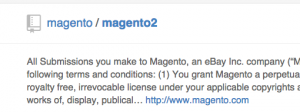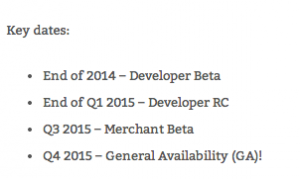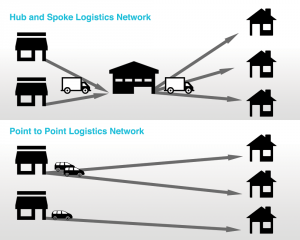WebShopApps values each and every person involved in making Magento what it is today. The Magento community is made up of many significant people; we interviewed these individuals to show off who they really are. These interviews helped us get a feel for what their place is within the community and who they are outside of work.
Alexander is the VP Communications and Partnerships at aheadWorks (@aheadWorks), a web development company that supplies software solutions for the eCommerce sector. aheadWorks is a leading provider of Magento extensions, Magento themes and templates, and custom Magento development services. aheadWorks strives to provide innovative technologies to web store owners, so their customers can enhance their online stores and heighten sales.
Alexander enjoys his line of work and cherishes the time he spends with his new daughter. To provide more insight on his personal and professional life, Alexander answered a few questions for us.

Can you describe what you really do at work?
The main areas of my responsibilities are to Nurture existing aheadWorks partnerships and search for new ways of cooperation within the ecosystem and beyond. This mostly involves email correspondence, phone talks, personal meetings and a good amount of strategic planning.
If money was no object, what would you spend your days doing?
Sounds dull, but I’d be happy to do the same set of things I do now.
In your spare time what do you get upto, and how do you balance this with your workload?
For the last 8 months my baby daughter took over almost every aspect of my life, and I’m happy to spend my leisure time with her. I also love cycling. I’m trying to start running on a regular basis, and I do my best to reserve some time for reading (non-fiction mostly).
How do you see the future evolving for Magento and the eCommerce space in general?
Although eCommerce progressed greatly in the last couple of decades, it’s still somewhat inefficient and clumsy in many aspects. However, things are moving forward incredibly fast, and in next 20 years we might as well find ourselves in a world with no physical stores at all (at least not as we know them now). As for Magento, with all the recent big news, 2015 promises to be quite interesting and I’m really looking forward to the upcoming release of version 2.0’s Developer RC. Magento is the one and only truly open-source eCommerce platform; the community around it is stronger than one can imagine, and I believe it’s got what it takes to overcome any challenge and keep progressing.
What is usually your last thought before falling asleep?
“Should’ve gone to bed two hours ago.”
Who is your role model, and why?
Not quite a role model, but Sir Isaac Newton is a man I truly admire. He significantly improved our understanding of the Universe, providing foundation for the bigger part of today’s science. If I were to choose from my contemporaries, it would probably be Elon Musk, who is also pretty good at thinking big, as well as at bringing elements of the future from sci-fi books and movies to reality.
Whats the worst thing you have to do as part of your job role?
Can’t think of anything that could be considered as a downside of what I do.
What motivates you?
Getting things done. It always inspires to take on new, bigger challenges.
What is the most played song on your MP3 player or phone?
Didn’t really do any extensive studies here, but according to iTunes it’s “Tell Them” by Seconds (aka Markus Enochson and Luciano Leiva).
Would you like to plug anything?
Imagine 2015 is just around the corner and I can’t wait to get there and meet with all the friends. See you soon, guys!






 If you’re a merchant you’ve almost definitely been gearing up for the holidays already. Checking your inventory and suppliers to make sure you can meet demand, beefing up your fulfillment and customer support staff, and making final changes to your site. Shipping becomes critical as we approach Christmas and it becomes especially important for you and your customers to understand what service they’ll need to choose as that date approaches.
If you’re a merchant you’ve almost definitely been gearing up for the holidays already. Checking your inventory and suppliers to make sure you can meet demand, beefing up your fulfillment and customer support staff, and making final changes to your site. Shipping becomes critical as we approach Christmas and it becomes especially important for you and your customers to understand what service they’ll need to choose as that date approaches.

